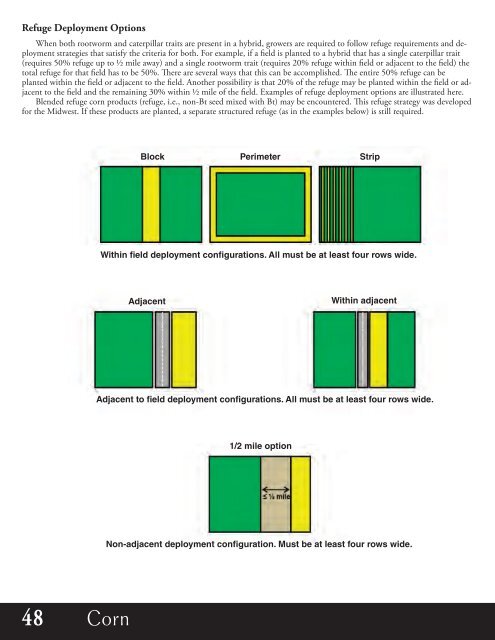Agronomic Crops
mJyPrJ
mJyPrJ
You also want an ePaper? Increase the reach of your titles
YUMPU automatically turns print PDFs into web optimized ePapers that Google loves.
Refuge Deployment options<br />
When both rootworm and caterpillar traits are present in a hybrid, growers are required to follow refuge requirements and deployment<br />
strategies that satisfy the criteria for both. For example, if a field is planted to a hybrid that has a single caterpillar trait<br />
(requires 50% refuge up to ½ mile away) and a single rootworm trait (requires 20% refuge within field or adjacent to the field) the<br />
total refuge for that field has to be 50%. ere are several ways that this can be accomplished. e entire 50% refuge can be<br />
planted within the field or adjacent to the field. Another possibility is that 20% of the refuge may be planted within the field or adjacent<br />
to the field and the remaining 30% within ½ mile of the field. Examples of refuge deployment options are illustrated here.<br />
Blended refuge corn products (refuge, i.e., non-Bt seed mixed with Bt) may be encountered. is refuge strategy was developed<br />
for the Midwest. If these products are planted, a separate structured refuge (as in the examples below) is still required.<br />
Block<br />
Perimeter<br />
Strip<br />
Within field deployment configurations. All must be at least four rows wide.<br />
Adjacent<br />
Within adjacent<br />
Adjacent to field deployment configurations. All must be at least four rows wide.<br />
1/2 mile option<br />
Non-adjacent deployment configuration. Must be at least four rows wide.<br />
48 Crop Corn Name


